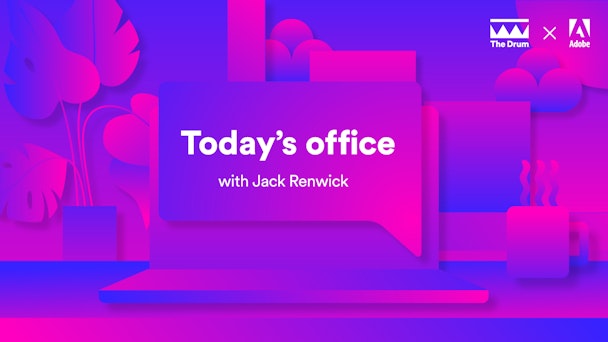Why the pandemic is sending designer Jack Renwick back to school
Working from home over the past 18 months has inspired many people to change their lives. Designer Jack Renwick, founder and creative director of Jack Renwick Studios, was inspired to change other people’s.

Why the pandemic is sending designer Jack Renwick back to school
She’s bought a disused holiday estate on the west coast of Scotland, and is about to start converting it into a design school for under-privileged children. She’ll run the agency from there along hybrid remote/in-office lines, and it’ll also be a place where agency heads can bring their teams on retreats, while still being able to work remotely.
How could Creative Cloud for teams help you? Designed for creativity, built for business.
“We’re going to call it Sideways Projects. We’ll run JRS from Scotland, and then we’re going to run some other projects as well, hopefully, as a way of getting young, under-privileged children into design and exciting them about design and understanding there’s a career there for them,” she explains.
“We get the keys at the end of August, but there’s a lot of work to do. Next summer is when we’re looking to look recruit the first cohort of kids, and we’ll also be able to start inviting people who are looking for an escape with their team.”
Rescuing a ‘lost generation’
Sideways was inspired by conversations Renwick had when she joined a Slack group formed by other design agency heads during lockdown to share help and advice.
“A lot of us felt it was our duty to give as many opportunities to graduates and students as we could, otherwise we’ll just have a massive gap where people who’ve been studying for the past couple of years have just fallen out of the industry. And we need them. We need their fresh thinking, and they’re also the ones who are learning all the new technologies that we need to know about.”
Renwick also believes that education in art and design is not seeing the investment and support it needs from the UK Government, so brands and the design industry itself need to step in. In the case of Sideways, she’s targeting young people who have an interest in design and art, but don’t know where to begin.
“It’ll be a testing ground for them, where they can work with our team on charity projects to see if going to art school would suit them, or if they could do an apprenticeship with us.”
Solo needn’t mean silo’d
While concerns about a possible ‘lost generation’ of design students were part of the inspiration for the project, the other part was the realization during lockdown that the technology existed to allow a design business to run remotely.
“I’ve always been ‘studio-first’; get everyone in the studio because that’s where the magic happens,” she says. “I still encourage the team to think independently, but then to share online. We’ve got different meeting rooms and online hangouts so we can chat and share the work. That has been essential, because otherwise you’re just in a complete silo. And then people can start thinking things are brilliant, when really they’re not.”
Renwick is particularly enthusiastic about the way people can now work on the same file simultaneously, making comments and suggestions without needing endless meetings. This, she believes, helps to keep the flow going and, equally importantly, enables her to rein things if they start going in the wrong direction.
“That’s one thing I had been a bit nervous of,” she says. “When you’re the hovering art director in the middle of a studio, you can spot things and say ‘Guys, that’s maybe not going in the right direction’. But when you’re saying “Let’s catch up in three days online”, you’re not around to see those things. So being able to see the files as they’re developing and stop people going down rabbit holes, I found that a lifeline.”
Cultivating new ways of thinking
Renwick was also concerned about how designers would respond to staring at a screen all day, without the ability to go elsewhere for inspiration. Faced with a problem that they couldn’t solve in the way they would have pre-pandemic, she says, some people defaulted to browsing design blogs and Pinterest, resulting in work starting to look “samey”. But others looked for new approaches.
“That’s where clever thinking has to come in,” she says. “You look for different ways to crack a problem that you may have had a set formula for approaching before. I’m hoping to see a bit more unusual work coming out from this lockdown, but I guess that’ll be coming out next year.”
Content created with:

Adobe
Work management. Built for the enterprise. Connect, collaborate, and execute on complex workflows - from anywhere.
Find out more